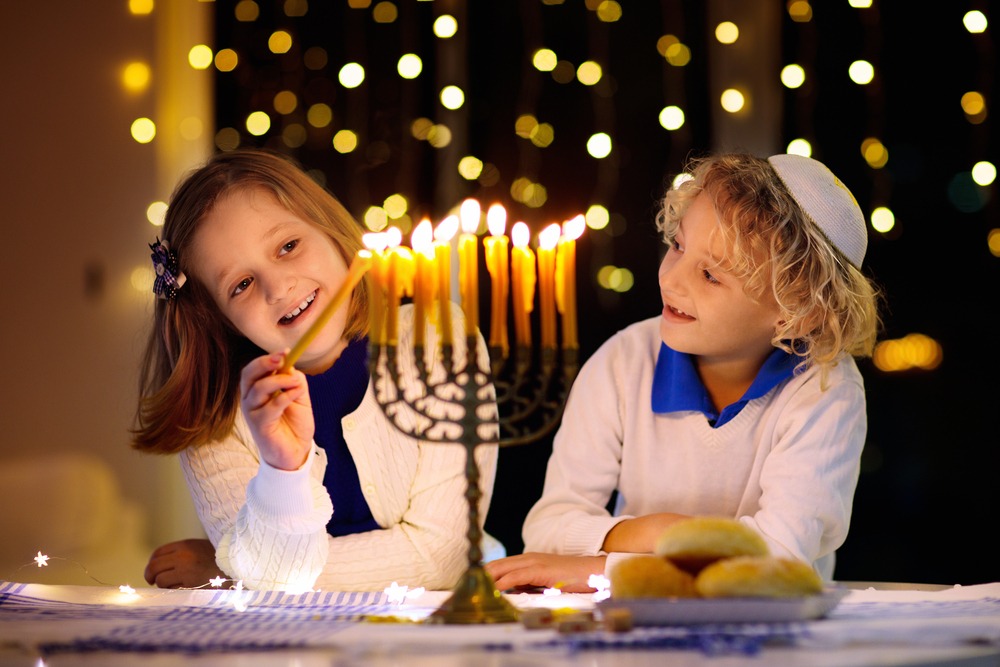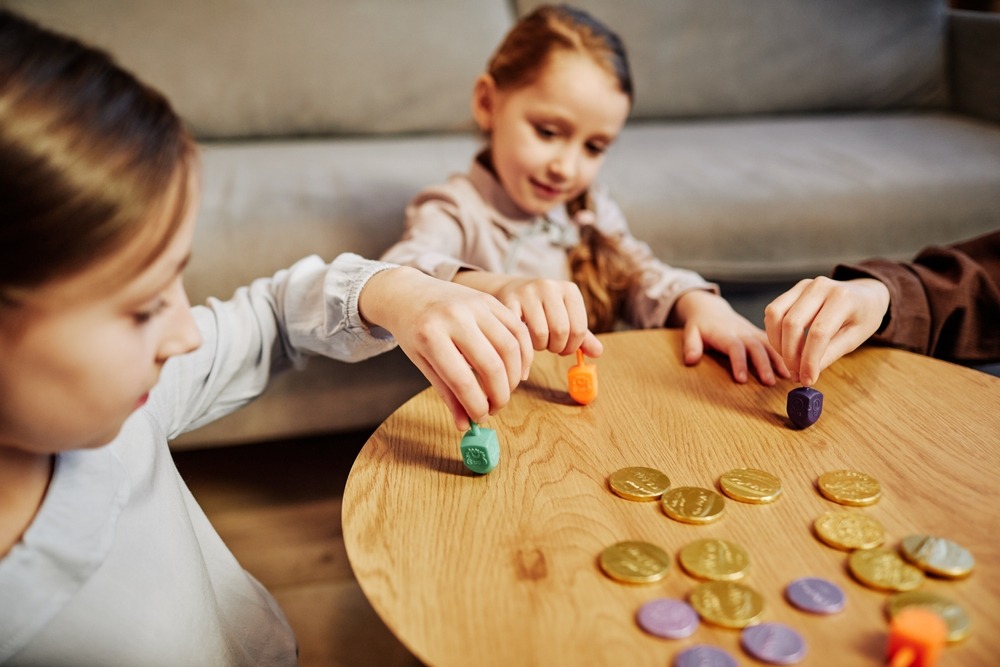Hanukkah: The Festival of Lights – Origins, History, and Modern Celebrations
Hanukkah, also spelled Chanukah, is a vibrant Jewish holiday commemorating the resilience of faith, the power of hope, and the miracles that come in times of darkness. Known as the Festival of Lights, Hanukkah celebrates the rededication of the Second Temple in Jerusalem after its desecration by Greek-Syrian forces in the 2nd century BCE. Spanning eight days, Hanukkah includes the lighting of the menorah, special foods, games, and prayers, each tradition symbolizing the strength and unity of the Jewish people. This article explores the origin story of Hanukkah, its historical evolution, and how it is celebrated today.
The Origin Story of Hanukkah: The Maccabean Revolt and the Miracle of the Oil
Historical Background
Hanukkah’s origins date back over two millennia to the Hellenistic period, around 168 BCE, when the Seleucid King Antiochus IV ruled over Judea (present-day Israel and Palestine). Under Antiochus’s rule, Jewish religious practices were suppressed, and Hellenistic customs were forced upon the people. Antiochus sought to unify his empire under Greek culture, and as a result, the practice of Judaism was forbidden, the Temple in Jerusalem was desecrated, and Jewish people were required to worship Greek gods.
The Maccabean Revolt
In response to Antiochus’s oppressive measures, a Jewish priest named Mattathias and his five sons, including Judah Maccabee, led a rebellion against the Seleucid Empire. Known as the Maccabean Revolt, this uprising gathered followers who resisted Greek rule and fought to restore Jewish freedom of worship. After three years of conflict, the Maccabees miraculously succeeded in reclaiming Jerusalem and, ultimately, the Second Temple.
The Rededication of the Temple and the Miracle of the Oil
Upon reclaiming the Temple, the Jewish people faced the task of purifying and rededicating the holy space, which had been defiled by foreign worship. As part of the rededication, they needed to rekindle the Ner Tamid, the eternal flame that symbolized God’s perpetual presence. However, they found only a small amount of oil that had remained uncontaminated—enough for one day.
According to the Talmud, a miracle occurred: this small amount of oil continued to burn for eight days, allowing the people time to prepare more oil. The miracle of the oil is the central symbol of Hanukkah, representing divine intervention and the endurance of Jewish faith.
The History of Hanukkah Celebrations Through the Centuries
The Early Observance of Hanukkah
Hanukkah was established as an eight-day celebration to commemorate both the military victory of the Maccabees and the miracle of the oil. However, because it is not mentioned in the Hebrew Bible (as it occurred after the biblical canon was established), Hanukkah did not become one of the more prominent Jewish holidays. It was recorded in texts like the Books of the Maccabees (which are part of the Apocrypha) and later in the Talmud, where the story of the miracle is detailed.
During the early centuries, Hanukkah was celebrated quietly by Jewish communities. The primary observance was the lighting of the menorah—a nine-branched candelabrum with eight candles representing each night of Hanukkah and one “helper” candle, the shamash, used to light the others. The menorah is sometimes called the hanukkiah to distinguish it from the seven-branched menorah used in the Temple.
Hanukkah in the Medieval Period
During the medieval period, Hanukkah celebrations were modest. The focus remained on the lighting of the menorah and the recitation of prayers, particularly Hallel (psalms of praise) and Al HaNisim (a prayer of thanksgiving for the miracles). Families gathered for modest meals, and children were sometimes given gelt (coins), symbolizing prosperity and blessings.
In some communities, new traditions emerged, such as playing games with the dreidel (a four-sided spinning top), which likely originated as a way to secretly study Torah during times of persecution, disguised as gambling. Each side of the dreidel bears a Hebrew letter: Nun, Gimel, Hei, and Shin, representing the phrase “Nes Gadol Haya Sham” (“A great miracle happened there”).
Hanukkah in Modern Times
Hanukkah evolved over time and took on new significance, particularly in the 19th and 20th centuries. With increased secularization and the rise of the Jewish diaspora, Hanukkah became a public celebration of Jewish identity and resilience. In America, Hanukkah gained visibility as Jewish communities integrated into the broader culture, and it became a family-centered holiday with a focus on community gatherings, music, and gifts. As a result, it also became more widely celebrated, coinciding with the Christmas season and embracing a message of light, hope, and resistance.
In Israel, Hanukkah is celebrated as a national holiday, emphasizing the Maccabean victory as a symbol of Jewish self-determination. Schools hold educational programs about the holiday’s history, and cities host menorah lightings and public celebrations.

How Hanukkah is Celebrated Today
Today, Hanukkah remains one of the most widely celebrated Jewish holidays, observed by Jewish families and communities worldwide with a mix of traditional and modern customs. Key practices include lighting the menorah, singing special songs, playing games, and sharing festive meals.
Lighting the Menorah
The menorah is lit each evening of Hanukkah, with one candle added each night until all eight are aglow. The lighting begins with the shamash (helper candle), which is used to kindle the other candles. A set of blessings, or brachot, is recited as the menorah is lit. The primary blessing thanks God for the commandment to kindle the Hanukkah lights, while the second blessing commemorates the miracles of the Hanukkah story.
In recent years, public menorah lightings have become common in cities worldwide. These events, often hosted by Jewish organizations like Chabad, foster community and provide an opportunity to share the holiday’s message of light and hope.
Reciting Special Prayers and Singing Songs
Two important prayers are recited throughout Hanukkah: Hallel and Al HaNisim. Hallel, consisting of psalms of praise, is recited during morning prayers each day of Hanukkah. Al HaNisim is added to the daily Amidah and the grace after meals, expressing gratitude for the miracles and the heroism of the Maccabees.
Music plays an important role in Hanukkah celebrations as well. Traditional songs like Maoz Tzur (“Rock of Ages”) are sung after lighting the menorah, and newer Hanukkah songs, like Oh Hanukkah, Oh Hanukkah and Sevivon Sov Sov Sov (dreidel spinning song), are popular among families and children.
Food and Festive Meals
Hanukkah foods reflect the holiday’s central theme: oil. Fried foods are traditional, symbolizing the miracle of the oil. Jewish communities prepare different foods based on cultural influences, but some of the most popular Hanukkah foods include:
- Latkes: Potato pancakes fried in oil, often served with applesauce or sour cream.
- Sufganiyot: Jelly-filled doughnuts, a favorite in Israeli celebrations.
- Loukoumades: Honey-dipped fritters, popular in Sephardic communities.
These foods are enjoyed with family and friends, reinforcing the warmth and joy of the holiday season.
Playing Dreidel
Playing dreidel remains a beloved Hanukkah tradition, especially among children. A dreidel is spun, and depending on which Hebrew letter lands face up, players may win or lose chocolate coins (gelt) or other small treats. The letters on the dreidel—Nun, Gimel, Hei, and Shin—represent the phrase “A great miracle happened there” (or “A great miracle happened here” in Israel, where the letter Peh is used instead of Shin).

Giving Gelt and Gifts
The custom of giving gelt (Hanukkah money) has evolved over time, especially in the U.S. where Hanukkah now includes exchanging gifts. The giving of gelt reflects both the generosity of the holiday spirit and the historical reference to the independence of the Jewish people. Gifts are often given to children each night of Hanukkah, making the holiday joyful and special for younger generations.
The Universal Message of Hanukkah
Hanukkah is more than a historical commemoration; it is a celebration of resilience, light, and the enduring spirit of faith. In a time of darkness, the miracle of the oil symbolizes the enduring belief that hope and faith can outlast challenges. Today, Hanukkah serves as a reminder of the strength to maintain one’s identity and values, even when faced with adversity.
Through centuries of change, Hanukkah continues to unite Jewish people across the world, bringing together tradition, faith, and community. As menorahs glow in homes and public spaces, Hanukkah lights the way for a brighter, more hopeful future, embracing its timeless message of light over darkness and freedom over oppression.


































